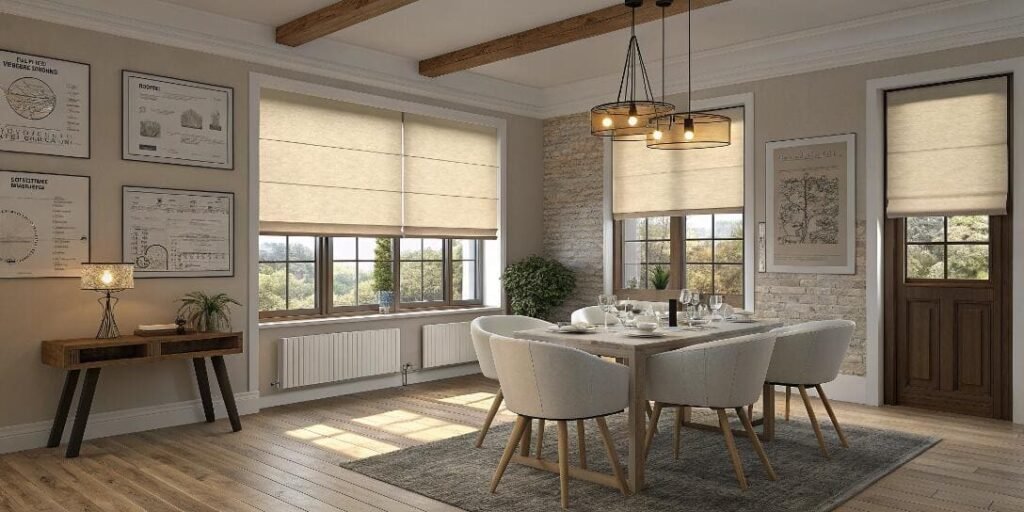Are you tired of constantly battling dust buildup on your window coverings, especially if you or your clients suffer from allergies? Traditional blinds can be notorious dust traps, affecting indoor air quality and requiring frequent, tedious cleaning.
The cleanest window treatments for minimizing dust and allergens are generally smooth, non-porous materials like roller blinds and aluminum Venetian blinds, particularly those with anti-static properties, as they deter dust accumulation and are exceptionally easy to wipe clean.
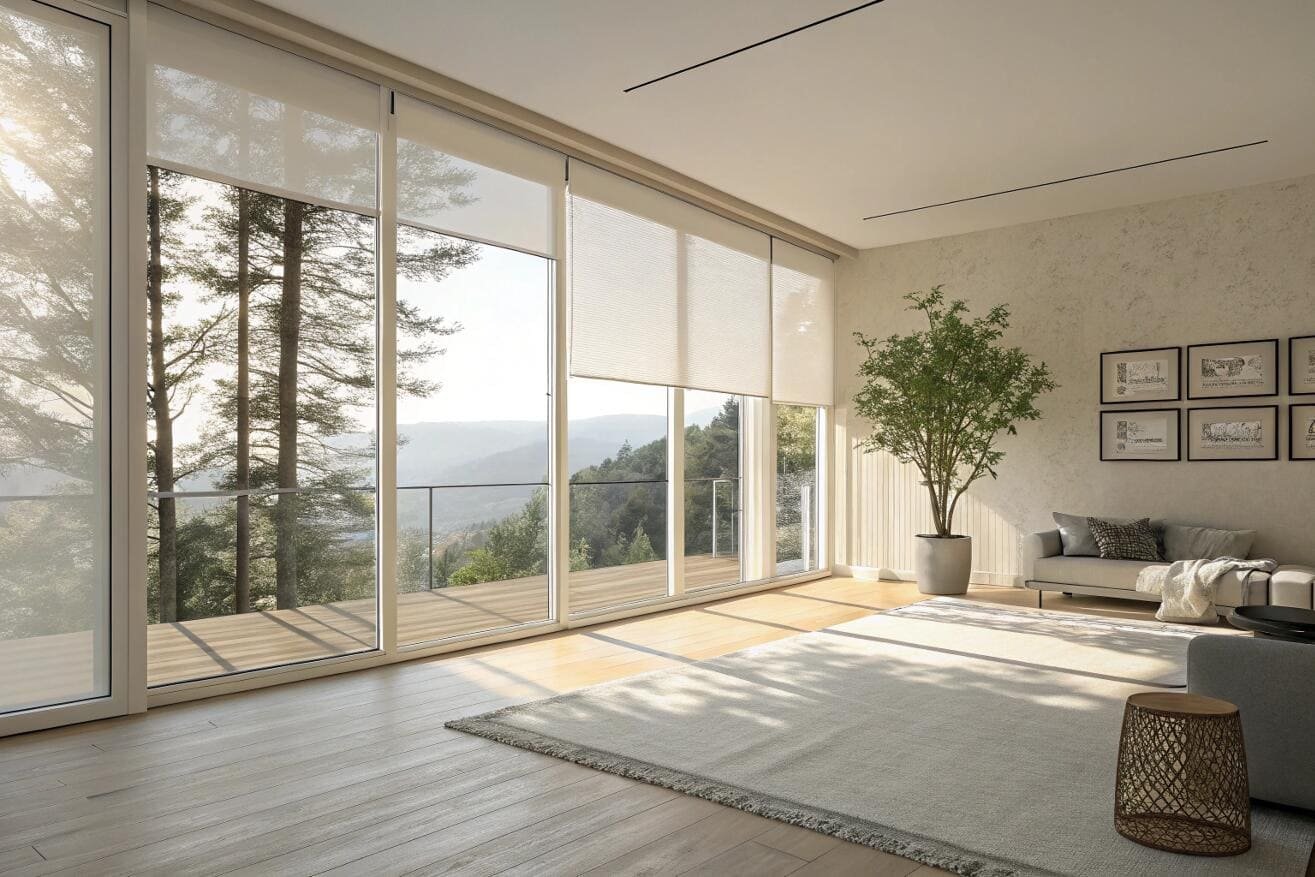
As a specialist in smart shading solutions, I understand that a clean environment[^1] is crucial for comfort and health. My clients often ask how to choose blinds that contribute to, rather than detract from, pristine indoor air. Let us explore which window treatments are champions in the fight against dust, helping you create healthier, easier-to-maintain spaces.
What blinds are best for dust allergies?
Do dust and allergens from window treatments[^2] worsen your or your clients' allergy symptoms? Selecting the right blinds can make a significant difference in creating a more hypoallergenic environment.
For dust allergies, the best blinds are those with smooth, easily cleanable surfaces that do not trap dust, pollen, or pet dander. Options like roller blinds, aluminum Venetian blinds, and certain PVC-free solar shades are highly recommended due to their non-porous nature.
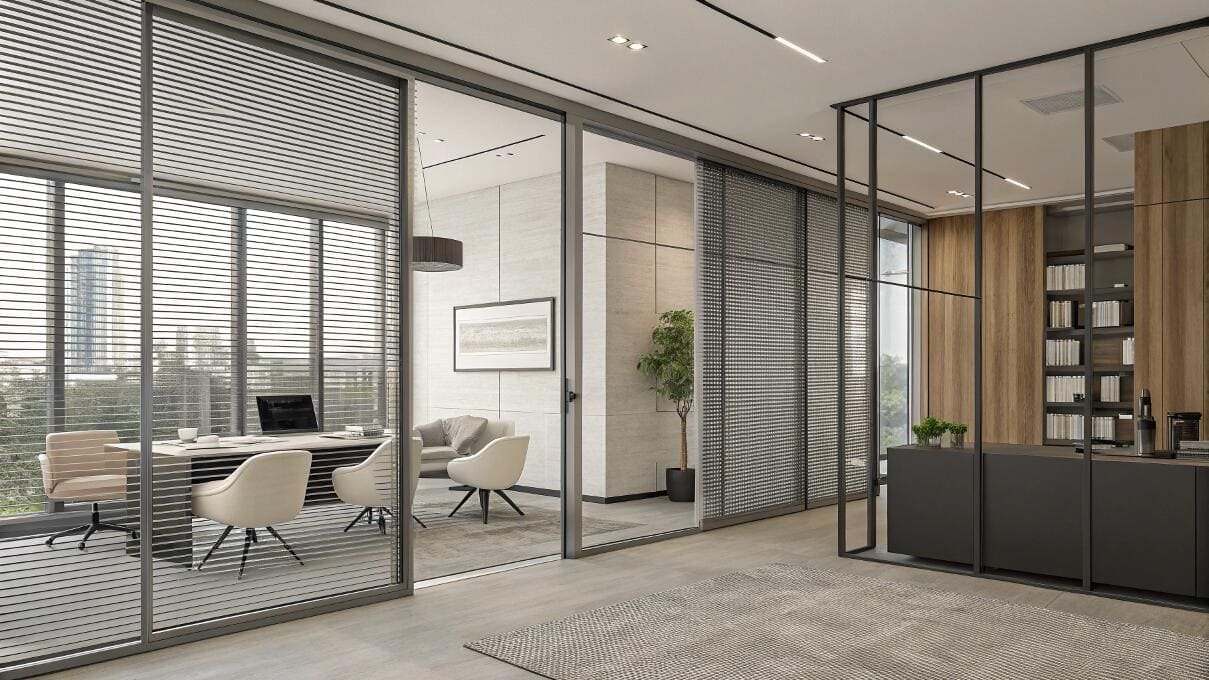
When advising clients on allergy-friendly solutions, my focus is always on minimizing surfaces where allergens can cling and accumulate. Traditional fabric curtains or Venetian blinds with many slats and cords are notorious dust collectors[^3]. Here is what I recommend for allergy sufferers:
| Blind Type | Dust-Resistance Features | Maintenance for Allergies | Considerations |
|---|---|---|---|
| Roller Blinds | Made from a single, smooth sheet of fabric (often PVC-free polyester or screen material) that rolls up. Their flat, continuous surface offers minimal areas for dust to settle and cling. Many fabrics have anti-static coatings. Roller blinds are easiest to maintain with simple dusting and occasional spot cleaning . | Simple wiping with a damp cloth or dusting with a microfiber duster, ideally weekly. This quick, efficient cleaning prevents allergen buildup. Ranked as the easiest to maintain. | Excellent for modern, minimalist aesthetics. Ensure fabric is PVC-free and low-VOC for overall indoor air quality. Can be customized for blackout or solar control. |
| Aluminum Venetian Blinds | Composed of smooth, hard metal slats. These non-porous surfaces actively repel dust instead of absorbing it. Their simple, clean lines make them easy to wipe down. | Can be quickly wiped with a damp cloth or a slat duster. Dust does not adhere strongly to aluminum, making removal efficient. | Provide excellent light control and privacy. Can be susceptible to bending or denting if mishandled. |
| Faux Wood Blinds | Made from PVC or composite materials, offering a smooth, non-porous surface that resists moisture and dust better than real wood. | Similar to aluminum blinds, wiping with a damp cloth or duster is highly effective. | A good alternative to real wood for high-humidity areas or where budget is a concern. Ensure they are low-VOC. |
| Specialized Screen Shades | Fabrics (polyester or fiberglass) woven with a specific openness factor, often treated with anti-static and anti-microbial finishes. Their smooth, uniform weave resists dust and allows for easy cleaning. | Simple wiping with a damp cloth or vacuuming with a brush attachment. | Excellent for glare reduction and UV protection, making them ideal for sunny rooms. |
| Honeycomb/Cellular Blinds (Certain types) | While their cellular structure can, in theory, trap some air and dust, many modern honeycomb fabrics are made from anti-static, non-woven materials that are less prone to attracting dust than woven fabrics. Their enclosed cells also keep dust within the blind structure rather than releasing it into the room. | Gentle vacuuming with a brush attachment or dusting. Their internal structure is not typically exposed to daily dust buildup, but occasional thorough cleaning may be needed. | Offer excellent insulation and energy efficiency. Look for anti-static treatments or materials that explicitly claim low dust retention for allergy sufferers. |
Crucially, avoid fabric-heavy treatments like draperies, curtains, and Roman blinds made from plush, woven materials, as these act like giant filters, trapping vast amounts of dust, pollen, and pet dander, making them allergy nightmares unless laundered very frequently. The smoother, simpler, and more easily wipeable the surface, the better for allergy relief.
Do dust mites live on blinds?
Are you concerned that the blinds in your home or project might be a breeding ground for notorious dust mites? Understanding where these microscopic pests thrive is key to effective allergen control.
Yes, dust mites can live on blinds, especially those made from fabric, woven, or porous materials that collect skin flakes and moisture. Smooth, non-porous blinds like roller blinds or aluminum Venetians are significantly less hospitable to dust mites due to their easy-to-clean surfaces and lack of crevices.
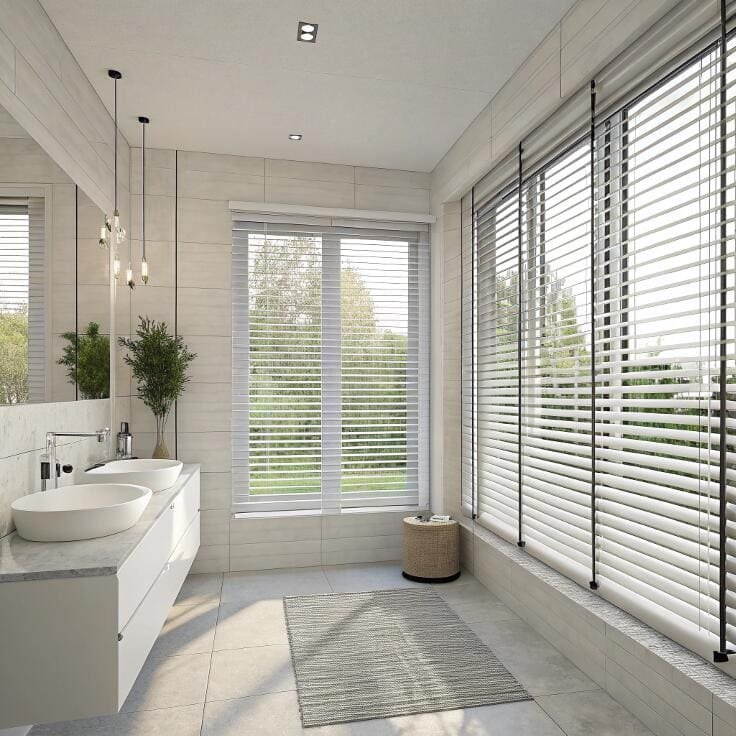
Dust mites are microscopic arachnids that feed on dead skin flakes from humans and pets. They thrive in warm, humid environments and particularly love fibrous materials where food and moisture are abundant. Unfortunately, this makes many window treatments a potential habitat.
| Blind Type | Dust Mite Risk | Reason |
|---|---|---|
| High Risk: Fabric Curtains/Draperies, Roman Blinds (Heavy Fabric), Vertical Blinds (Fabric Slats), Woven Wood (Untreated) | These materials are highly porous and fibrous, providing ample crevices and surface area for dust mites to settle, feed, and reproduce. They also absorb moisture from the air, creating the humid conditions dust mites prefer. | The natural fibers and weaves of these window coverings act like filters, trapping dust, skin flakes, and pet dander. Fabric blinds, especially those that are thick or have deep pleats, offer vast, undisturbed breeding grounds. Additionally, routine cleaning methods like dusting are often insufficient to remove imbedded dust mite allergens, requiring frequent washing or professional steam cleaning, which is often impractical for blinds. |
| Moderate Risk: Multi-Slat Blinds (Wood, Faux Wood in general) | While less porous than fabric, the numerous horizontal slats and lift cords of traditional Venetian or mini blinds can still collect significant amounts of dust. Slats, if not regularly cleaned, can become covered in dust mite allergen. | Each slat provides a surface for dust to accumulate. Although the surfaces are smoother than fabric, the sheer number of surfaces and concealed areas (like inside the headrail or around the cords) can still harbor dust mites and their allergens. Cleaning is more tedious than for single-panel blinds, meaning it might be neglected. |
| Low Risk: Roller Blinds, Aluminum Venetian Blinds, Faux Wood (smooth), Solar Shades | These blinds have consistently smooth, non-porous surfaces that dust mites struggle to cling to or breed on. They do not absorb moisture well, and their flat presentation makes them easy to wipe clean, removing any potential food source. | The tightly woven or solid surfaces of these blinds offer no fibrous material for dust mites to burrow into. Dust simply rests on the surface and can be easily wiped away with a damp cloth or microfiber duster[^4]. Roller blinds, for instance, are designed for simplicity and easy maintenance, making frequent cleaning practical and effective for dust mite control . These materials do not retain the humidity that dust mites require to thrive. |
To effectively combat dust mites on blinds, regular cleaning is paramount. I recommend vacuuming blinds with a brush attachment or wiping them down weekly with a damp cloth to remove accumulated dust. Opting for low-risk blind types significantly reduces cleaning effort and ensures a healthier indoor environment.
What is the cleanest window covering?
When cleanliness and minimal allergen accumulation are top priorities, what truly stands out as the most straightforward window covering to keep spotless? The answer lies in simple design and smooth materials[^5].
The cleanest window covering is generally the roller blind, particularly those made from smooth, anti-static, or PVC-free polyester fabrics. Their single, flat surface minimizes dust collection, making them exceedingly easy to wipe clean and maintain with simple dusting.

In my years of working with various window treatments, the ease of maintenance often correlates directly with how "clean" a window covering appears and truly is, especially regarding dust and allergens. Based on my observations and manufacturer guidelines:
| Window Covering Type | Ease of Cleaning (Dust/Allergens) | Why it's Clean or Not |
|---|---|---|
| Roller Blinds | EASY. A single sheet of fabric that rolls up, presenting a flat, continuous surface. Dust simply rests on top and can be effortlessly wiped away with a damp cloth or microfiber duster. Many fabrics are anti-static, further repelling dust . | Their minimalist design leaves very few crevices or folds for dust to collect. The materials are often synthetic and smooth, which do not trap allergens like natural fibers do. This means a quick wipe is usually all it takes to keep them pristine, significantly reducing the habitat for dust and dust mites. This simplicity is why they are often chosen for hospitals or highly sterile environments. They offer clean lines and are ideal for creating bright and airy spaces . |
| Aluminum Venetian Blinds / Faux Wood Blinds | EASY to Moderate. While their individual slats collect dust, the non-porous nature of aluminum and faux wood makes wiping them down very effective. However, the sheer number of slats means the cleaning process can be more time-consuming than for a single-panel roller blind. | The smooth, hard surfaces do not absorb dust or moisture, making them less hospitable for dust mites. Dust sits on top rather than embedding. The challenge lies in cleaning each slat individually, which requires more effort than simply wiping a flat surface. Special slat dusters can speed up the process, but it still involves more manipulation than a roller blind. |
| Zebra Blinds | MODERATE. Their dual-layer design with alternating sheer and opaque stripes means there are more surfaces and crevices for dust. They need more careful cleaning between stripes. Bi-weekly attention is often required to prevent dust buildup . | While they offer adjustable light control and modern style, their striped construction creates numerous folds and layers where dust can settle, making thorough cleaning more intricate. It is not as simple as a flat roller blind. |
| Shangri-La Blinds | COMPLEX. These blinds feature multiple layers of soft fabric (often two sheer layers with fabric slats in between), creating many dust-trapping surfaces and intricate structures. They require the most maintenance due to their complex structure . Professional cleaning every 6-12 months is recommended to maintain optimal performance . | The elegant light diffusion and sophisticated aesthetics come at a cost of higher maintenance. Their soft, woven fabric and delicate construction mean they easily trap dust and allergens. Cleaning them is not only difficult but also risks damaging the material, often necessitating specialized cleaning. |
| Fabric Curtains / Roman Blinds (Heavy Fabric) | VERY COMPLEX. These are essentially large fabric filters for the air. They absorb and trap vast quantities of dust, pollen, pet dander, and other airborne allergens from the room. | Plush fabrics, pleats, and folds create ideal environments for dust and mites. Basic dusting is largely ineffective. They require frequent, thorough vacuuming with a special attachment, or regular laundering/dry cleaning, which can be time-consuming, expensive, and may damage the fabric over time. For allergy sufferers, these are usually the worst choice unless they are routinely washed. |
For simplicity and genuine cleanliness, roller blinds are hard to beat. They offer a winning combination of minimalist design, non-porous surfaces, and unparalleled ease of cleaning, contributing to a healthier environment.
What to put on blinds to keep dust off?
Are you looking for a miracle solution to repel dust from your blinds, reducing the frequency of cleaning? While no product completely eliminates dust, certain treatments and regular habits can significantly reduce accumulation.
To help keep dust off blinds, apply anti-static sprays or wipes, which reduce static cling that attracts dust. Regular, gentle cleaning with a microfiber cloth or soft duster is crucial, as is maintaining good indoor air quality through filtration and humidity control.
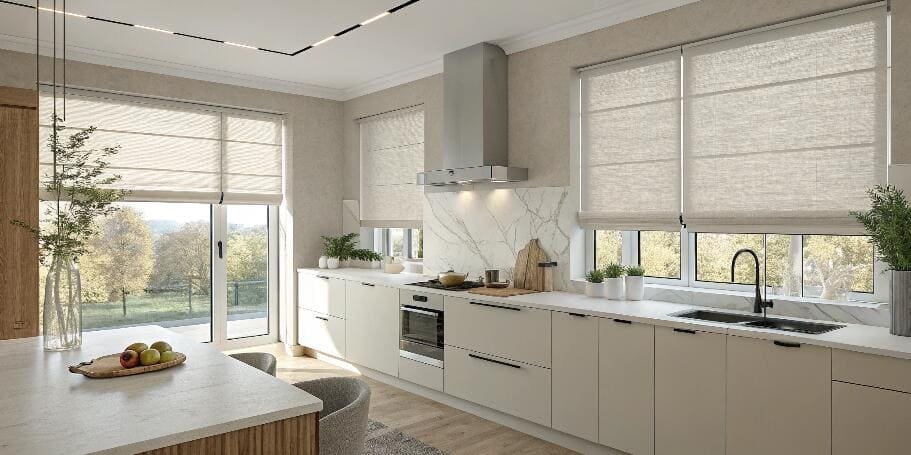
There is no "magic force field" that makes blinds completely dust-free, but as someone who consistently seeks low-maintenance solutions, I have found a few effective strategies:
- Anti-Static Products: Many blinds, especially those made of plastics, faux wood, or certain synthetic fabrics, can build up static electricity. This static charge acts like a magnet for airborne dust particles. Applying a commercial anti-static spray (often found for electronics or laundry) specifically designed for plastic or fabric surfaces can temporarily neutralize this charge, making dust less likely to cling. Alternatively, wiping blinds with an anti-static dryer sheet can also achieve a similar effect. Always test the product on an inconspicuous area first to ensure it does not cause discoloration.
- Fabric Softener Solution: A very mild solution of water and a tiny amount of liquid fabric softener (a few drops per cup of water) can be applied to a microfiber cloth and used to wipe down non-fabric blinds (like aluminum or faux wood). The fabric softener leaves a residue that helps reduce static and can make dust less likely to stick. Again, always test first.
- Regular Microfiber Dusting: The best defense is a good offense. Regular, gentle dusting with a high-quality microfiber cloth or a soft, static-attracting duster (like a lambswool duster) is paramount. Microfiber excels at trapping dust rather than just pushing it around. Performing this weekly or bi-weekly prevents dust from building up into a thick, stubborn layer that is harder to remove.
- Consider Anti-Static Blinds: Some modern blinds, especially certain roller blind fabrics or solar screens, come pre-treated with anti-static properties from the manufacturer. When sourcing new blinds, inquire about these features, as they offer long-term dust resistance without needing regular reapplication of sprays.
Ultimately, combining a little preventative treatment with consistent, easy cleaning methods will yield the best results for keeping your blinds looking clean and fresh.
How to get rid of dust and allergens in a room?
Are you struggling to create a truly clean and allergen-free environment for your clients, beyond just cleaning the visible surfaces? Effective dust and allergen removal requires a comprehensive approach.
To effectively get rid of dust and allergens in a room, regularly clean surfaces starting from top to bottom, vacuum with a HEPA filter, wash bedding in hot water, use air purifiers, and choose low-allergen window treatments like smooth roller or aluminum blinds.
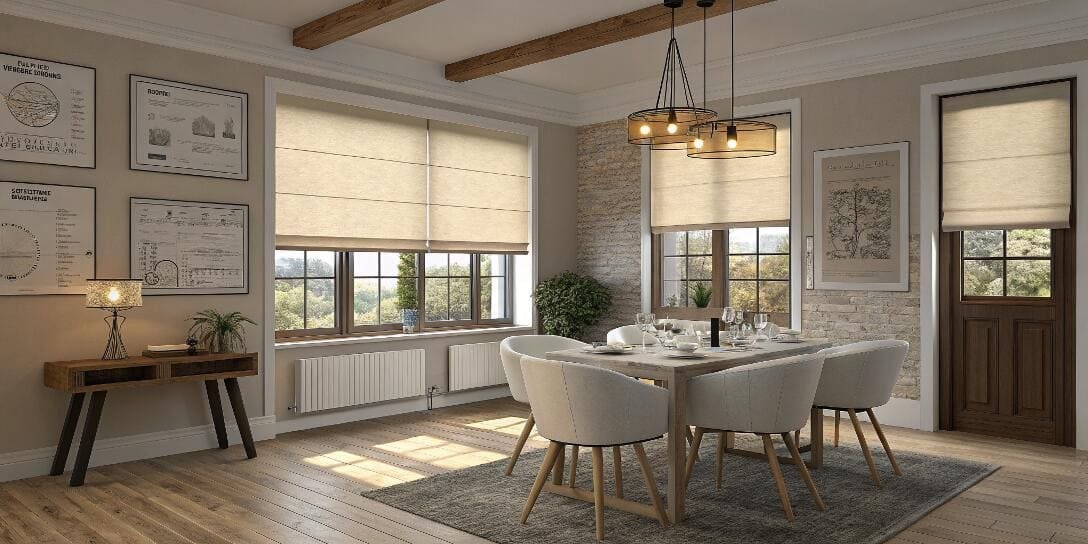
Creating a truly dust and allergen-free environment is a multi-faceted task, especially important for sensitive individuals. As someone who helps design healthy spaces, I emphasize these steps:
- Top-to-Bottom Cleaning: Always start cleaning from the highest points in the room (ceiling fans, light fixtures, high shelves) and work your way down. This ensures that dust falling from above is captured as you clean lower surfaces.
- Damp Wiping: Instead of dry dusting, which can just redistribute dust, use a damp cloth (preferably microfiber) to wipe down all hard surfaces (furniture, countertops, window sills, and blinds). This traps dust effectively.
- Vacuum with a HEPA Filter: Invest in a vacuum cleaner equipped with a High-Efficiency Particulate Air (HEPA) filter. These filters are designed to capture 99.97% of airborne particles as small as 0.3 microns, including dust mites, pollen, pet dander, and mold spores. Vacuum carpets, rugs, and upholstered furniture regularly, at least once or twice a week.
- Wash Bedding Frequently: Bedding (sheets, pillowcases, duvet covers) is a prime habitat for dust mites. Wash all bedding in hot water (at least 130°F or 54°C) weekly to kill dust mites and remove allergens.
- Control Humidity: Dust mites thrive in humidity above 50%. Use a dehumidifier in damp areas like basements or during humid seasons to keep indoor humidity levels between 30% and 50%.
- Use Air Purifiers: A good quality air purifier with a HEPA filter can continuously clean the air, removing airborne dust, pollen, pet dander, and other allergens that settle on surfaces. Strategically place them in bedrooms or living areas.
- Choose Smooth, Washable Window Treatments: As discussed, opt for roller blinds, aluminum Venetian blinds, or faux wood blinds that are easy to wipe clean and do not trap dust. Avoid heavy fabric curtains or those with intricate designs that are difficult to clean thoroughly.
- Minimize Clutter: Less clutter means fewer surfaces for dust to settle on. Keep open shelves to a minimum and store items in closed cabinets or bins.
- Regularly Clean Pet Areas: If pets are present, regularly clean their bedding and accessories, as pet dander is a common allergen.
By implementing these strategies, you can significantly reduce the dust and allergen load in any room, creating a much healthier and more comfortable environment for occupants.
Do blinds affect air flow?
Are you wondering if your choice of blinds might be impacting the circulation of air in a room, potentially affecting comfort or energy efficiency? Understanding their influence on airflow is important for optimal living conditions.
Yes, blinds can significantly affect airflow, either by blocking it when fully closed or by promoting it when open. Their design, material, and how they are operated determine their impact on ventilation, temperature regulation, and overall indoor air circulation.
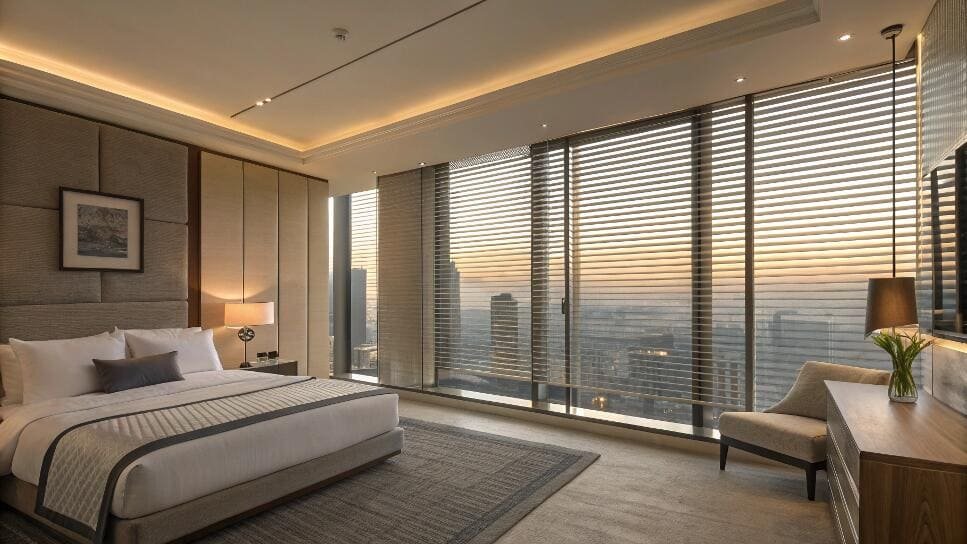
When I consult on projects, I often remind clients that window treatments are not just about light and privacy; they are also about regulating a room's climate and ventilation.
-
Blocking Airflow: When blinds are fully closed, especially solid types like blackout roller blinds or tightly closed Venetian blinds, they create a barrier that restricts air movement through the window. This can be beneficial in certain situations, such as:
- Insulation: In winter, fully closed blinds can trap a layer of air between the blind and the windowpane, acting as an insulating barrier to reduce heat loss through cold glass .
- Temperature Control: In summer, closed blinds (especially those with thermal backing or metallized fabrics) can block solar heat gain, reducing the need for air conditioning .
- Privacy/Security: When fully closed, they also block views, enhancing privacy and security.
However, if fresh air is desired, tightly closed blinds will impede natural cross-ventilation.
-
Promoting Airflow: When blinds are open or tilted, they can actually facilitate airflow:
- Venetian and Vertical Blinds: These blinds are excellent for air circulation when their slats are tilted open. They allow air to pass through while still providing some level of light control and privacy. The ability to angle slats means you can direct airflow without fully exposing the window.
- Roller Blinds / Roman Blinds: When fully raised, these blinds completely clear the window opening, allowing maximum airflow and cross-ventilation.
- Zebra Blinds: Similarly, their layered design can be adjusted to create open "sheer" sections, allowing air to pass through while still tempering direct sunlight.
In essence, a blind's impact on airflow is largely a function of its design and how it is used. For optimal ventilation, select blinds that can be fully opened or offer adjustable louvers. For maximizing energy efficiency and temperature control, solid or multi-layered blinds that close tightly are ideal. The key is choosing a blind type that offers the flexibility to manage both light and air according to the room's needs and external climate.
Are bamboo shades good for allergies?
Are you drawn to the natural aesthetic of bamboo shades but concerned about their suitability for allergy sufferers? It is important to know if these natural materials might harbor allergens.
Bamboo shades can be a moderately good option for allergies, as natural bamboo fibers generally do not off-gas harmful chemicals. However, their woven texture can accumulate dust and pollen, requiring consistent and thorough cleaning to prevent allergen buildup. Untreated bamboo is always preferred over chemically treated options.
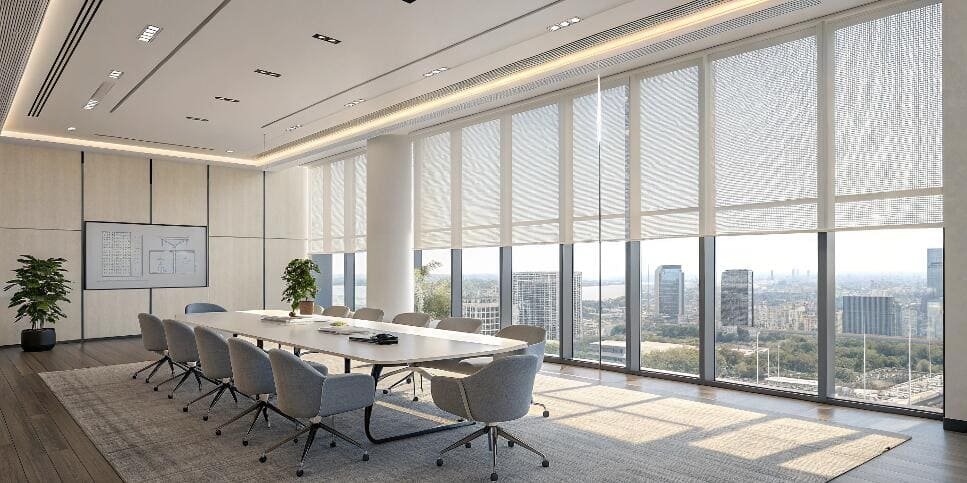
When considering natural materials like bamboo for allergy-sensitive environments, it is a mixed bag. On one hand, bamboo offers several advantages:
- Low VOCs: Untreated bamboo is a natural material that typically does not off-gas volatile organic compounds (VOCs), unlike some synthetic fabrics or finishes. This means it contributes less to indoor air pollution, which is a positive for air quality.
- Sustainability: Bamboo is a rapidly renewable resource, making it an eco-friendly choice.
However, the primary concern for allergy sufferers lies in the physical structure of bamboo shades:
- Dust Accumulation: Bamboo shades are typically made from woven bamboo reeds or strands. This woven texture creates numerous crevices and surfaces where dust, pollen, and pet dander can easily settle and become trapped. Unlike smooth roller blinds, which simply allow dust to rest on the surface, woven materials provide a more hospitable environment for allergens.
- Cleaning Difficulty: While bamboo shades can be dusted or vacuumed with a brush attachment, thoroughly removing embedded allergens from textured, woven materials can be more challenging than wiping a smooth surface. Over time, if not meticulously maintained, they can become significant dust reservoirs.
- Mold/Mildew Risk: In very humid environments, like bathrooms or kitchens, untreated natural fibers like bamboo can potentially absorb moisture and become susceptible to mold or mildew growth, which are also common allergens.
For optimal allergy management, smooth, non-porous materials remain superior due to their ease of cleaning and inhospitable surfaces for allergens. If you prefer the natural look of bamboo, ensure you commit to a rigorous and regular cleaning schedule (at least weekly vacuuming with a brush attachment). Also, confirm that the bamboo is untreated or finished with natural, non-toxic sealants to avoid introducing other chemical allergens.
Conclusion
Choosing dust-resistant window treatments like smooth roller blinds or aluminum Venetians is key to a cleaner, healthier home, especially for allergy sufferers. Regular cleaning and attention to material properties minimize dust and allergen accumulation.
Optimize Your Environment with Smart Blinds
Ready to create healthier, easier-to-maintain spaces free from excessive dust and allergens? Do not compromise on indoor air quality. Contact VelaBlinds today to explore our range of smooth, dust-resistant, and low-maintenance window treatments perfectly suited for your project’s needs and your clients’ well-being.
Email us at: info@velablinds.com
Extended FAQ Section
What is the ideal humidity level to minimize dust mites in a room?
The ideal indoor humidity level to minimize dust mites and other allergens is typically between 30% and 50%. Dust mites thrive in environments where humidity is above 50%, as they absorb moisture from the air to survive. By maintaining lower humidity levels, you effectively dehydrate dust mites, making it difficult for them to reproduce and reducing their population significantly. This can be achieved using dehumidifiers in humid climates or during damp seasons. Proper ventilation, especially in bathrooms and kitchens, also helps control humidity. Keeping indoor humidity within this optimal range not only helps control dust mites but also prevents mold growth and generally contributes to better indoor air quality, which is beneficial for allergy and asthma sufferers.
How often should blinds be cleaned to prevent dust buildup?
The frequency of cleaning blinds to prevent dust buildup largely depends on the type of blind and the environment. For smooth, non-porous blinds like roller blinds, a quick wipe down with a microfiber cloth or duster once a week or bi-weekly is usually sufficient to prevent significant dust accumulation. Roller blinds are easiest to maintain with simple dusting and occasional spot cleaning, typically only requiring monthly dusting for general upkeep. However, for multi-slat blinds like Venetian or vertical blinds, or those in high-dust areas (e.g., near busy roads, with pets), dusting every few days might be beneficial. Woven or fabric blinds, which trap more dust, ideally require weekly vacuuming with a brush attachment to remove surface dust, though deeper cleaning or laundering (if applicable) should be done periodically. Consistent and regular cleaning is key to minimizing allergens.
How do smart blinds contribute to a dust-reduced environment?
Smart blinds contribute to a dust-reduced environment primarily through their automation features. By motorizing blinds, the need for manual interaction (touching cords or slats) is eliminated, which reduces the disturbance of settled dust and prevents the transfer of skin oils that can attract dust. More significantly, smart blinds can be integrated into a home automation system and programmed to adjust themselves, for example, to partially close during windy conditions to prevent dust from entering or optimizing light without human disturbance. Some smart home systems can even be linked to air quality sensors, automatically adjusting blinds to reduce light and heat in conjunction with HVAC systems, thus potentially reducing indoor airflow that could stir up dust or controlling humidity levels indirectly. Motorized blinds offer convenience benefits for cleaning and contribute to overall better environmental management.
---
[^1]: Discover the health benefits of keeping your living space clean and allergen-free.
[^2]: Find out which window treatments are most effective in reducing allergens and dust.
[^3]: Identify window treatments that trap dust and allergens, and learn how to avoid them.
[^4]: Learn how to effectively use a microfiber duster to keep your home dust-free.
[^5]: Explore the benefits of smooth materials in minimizing allergen accumulation in your home.Partner with VelaBlinds for Your Next Project
Smart window treatments shouldn't be complicated. After working with 500+ distributors and contractors worldwide, I've streamlined the process to get you quality products, competitive pricing, and reliable support - every time.
Why project professionals choose VelaBlinds:
- ✅ Fast, Accurate Quotes - Detailed specs and pricing within 24 hours
- ✅ Transparent Pricing - No hidden fees, volume discounts clearly outlined
- ✅ Quality Assurance - Direct partnerships with certified OEM manufacturers
- ✅ Project Support - Dedicated account manager from quote to delivery
Start your next project:
📧 Quick Quote: Send your requirements to info@velablinds.com
📱 Direct Contact: WhatsApp +86 137 2012 8317
🌐 Browse Solutions: https://velablinds.com/
📁 Product Resources: Access spec sheets, catalogs & project files
Jimmy Chen, Founder
"I built VelaBlinds to solve the real challenges I faced as a project buyer - long lead times, unclear specs, and unreliable suppliers. Let's discuss how we can power your projects with smarter blinds."
Serving distributors and contractors across North America, Europe, and Australia since 2018.

